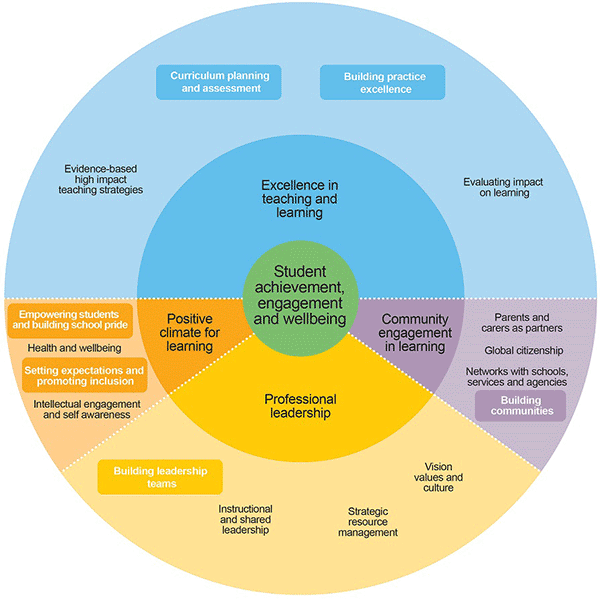A shared vision for literacy and numeracy focuses the work of schools, and supports teachers and students to develop shared beliefs and a common language.
It should place their core values and beliefs at the centre of teaching and learning, and provide a starting point for a close analysis of professional practice.
A vision should be created collaboratively in a culture of openness to learning, and be based on a belief that all students can be successful.
School principals and leadership teams are required to guide the school community to develop a clear and concise statement of belief and a trajectory for student achievement.
Vision development should involve:
- Engaging with the school council by including vision development as an agenda item
- Discussions during staff meetings
- Input from Professional Learning Communities within the school
- Ideas and submissions from the Student Representative Council
What to consider
When developing the vision, school leaders should consider:
- What school communities and teachers value
- The beliefs about learning that underpin practice
- How current practice helps to achieve what is valued
- How new practices will help to achieve what we value
A shared vision seeks to establish consistency in the curriculum and teaching. This consistency supports student success because teachers are reinforcing the same expectations and effective practices. The vision provides a reference point for all decisions about literacy and numeracy, including:
- Curriculum
- Pedagogy
- Resourcing
- Professional development
- Student agency
- Communication with parents
The school's vision should be about both collective and individual efficacy. Processes are in place for the communication of the vision so that everyone is accountable for sustaining it.
Communicating the shared vision
Schools communicate their vision in many ways. For example the vision statement:
- is included in newsletters, offices, staff rooms, school corridors and websites
- informs discussions in staff meetings, curriculum meetings and parent events
- is an explicit reference point throughout professional learning activities
- is referenced when success is being celebrated
- is tied to the day-to-day work of the school when school tours and information events are held.

Image: The FISO Improvement Model.
FISO:
Dimension: Vision values and culture
FISO: Continuum -
 Professional Leadership – Vision, values and culture (pdf - 216.29kb)
Professional Leadership – Vision, values and culture (pdf - 216.29kb)
Focus on Literacy - Professional Practice Notes to guide Literacy Leadership
The following Practice Notes have been developed to assist school leaders and teachers to embed literacy in the Curriculum and across the school: